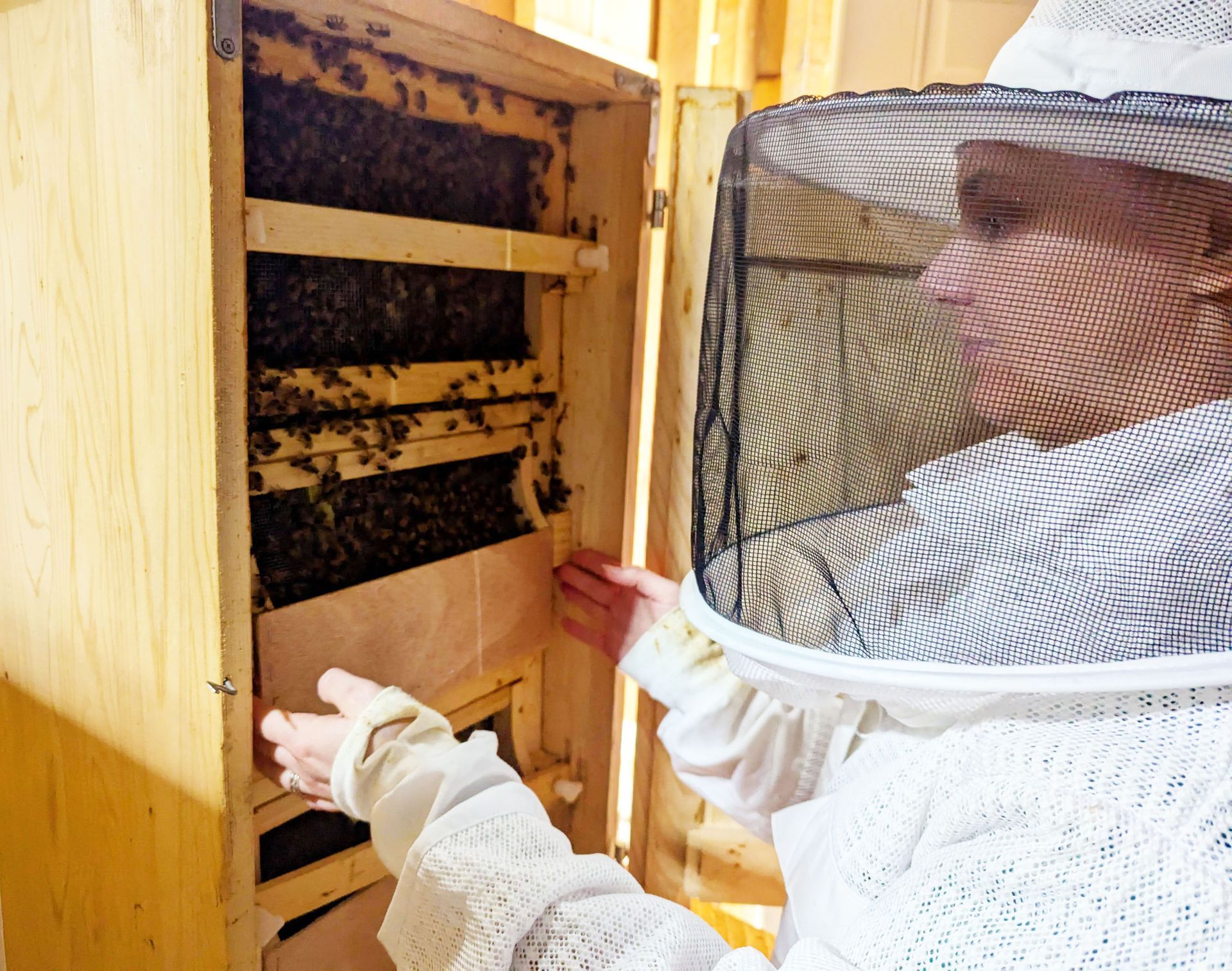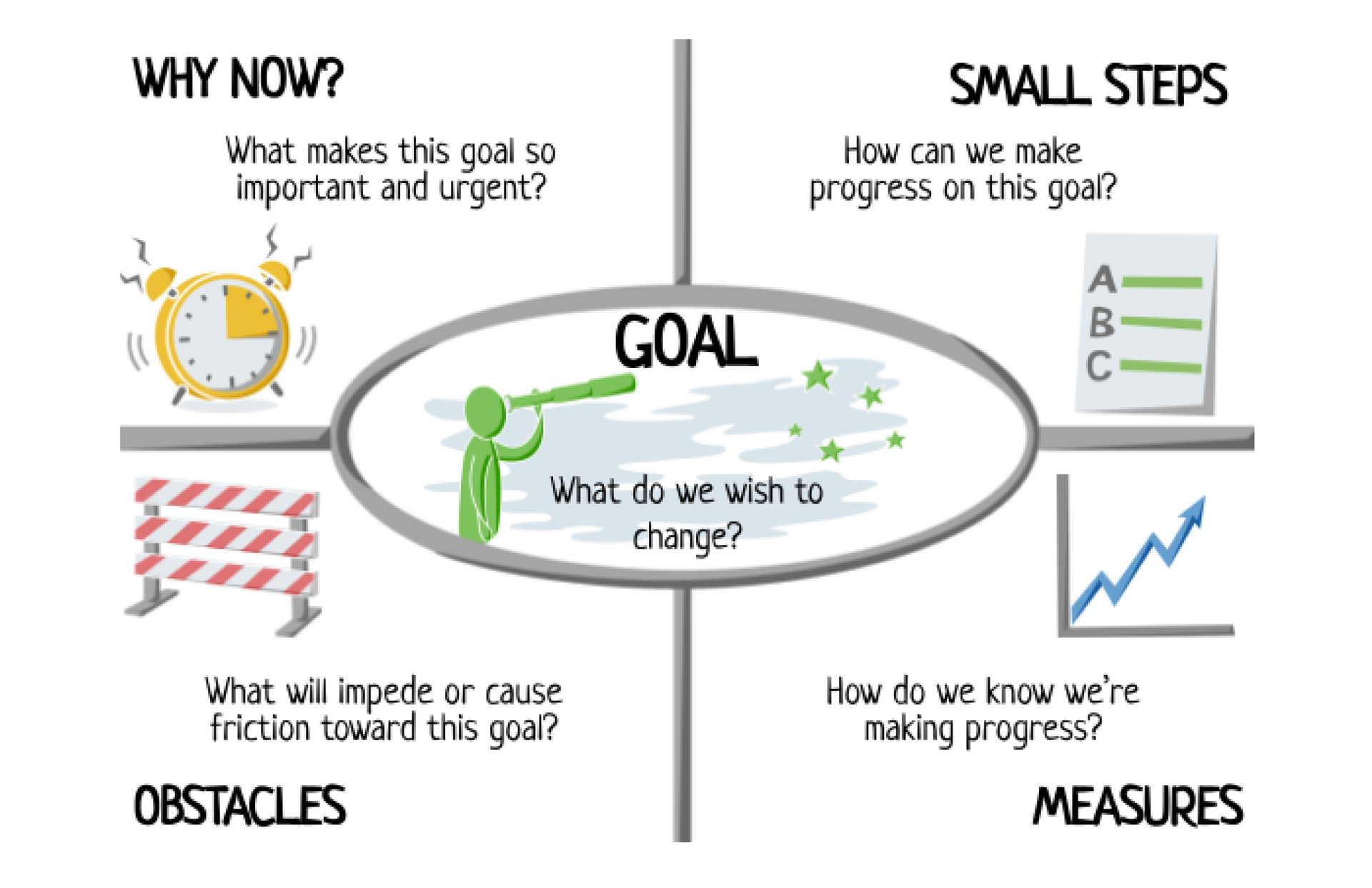From Knowing to Growing: Turning Lessons Learned Into Lasting Change
Here’s something you should know about me: I’m a chronic project starter, always excited to chase the shiny new thing, but the number of projects that wind up unfinished? Yikes.
If your New Year’s resolutions fizzle by March, all of your projects lurch forward in fits and starts, or you’ve been inspired by an eye-opening workshop or self-betterment book, but forgot about those “life-changing” lessons just a few weeks later, you might be that way, too!
As a leadership coach who is on their own growth journey, I know it’s not always easy to apply learned lessons and change our behaviors—but it is possible. Here are a few of the approaches I use, personally and professionally, to grow sustainably, without making it so burdensome that I abandon the effort entirely.
Start With Your “Why?”
For better or worse, our behaviors define us. The problem is that most of us are so focused on our actions that we skip over how it shapes our identity. Try using this sentence as an exercise; it should help you shape your “why.”
Because I am the kind of ____, when ____, I will ____.
For example, “Because I’m the kind of leader who grows people, when a teammate brings me a problem, I will ask one open question before offering advice.” Framing it this way turns a vague intention into something that can be acted on in the moment. It offers insight into who you are, why this change in behavior matters to you, and what, if any, urgency there is around it.
Discover What’s Blocking Your Progress
This can be the hardest part of changing behaviors, so be patient, but honest, with yourself! It will take time, and you’ll likely encounter some setbacks. That’s okay. Every behavior sits at the intersection of three forces: capability, opportunity, and motivation (aka the COM-B model).
Take a few minutes to ask yourself:
- Capability: Can I realistically do it?
- Opportunity: Does my environment make it likely?
- Motivation: Do I want to do it right now?
I’m a beekeeper. (Stick with me here—it’s relevant, promise!) I sometimes get intimidated by the work I know is necessary to keep my hives healthy. I’ll avoid doing a hive inspection by telling myself that I don’t know what I’ll find, I won’t know what to do, or I won’t have the supplies I need to fix the problem.
This wasn’t a capability problem. This was a motivation problem triggered by fear, so I broke down the task into steps that don’t feel so scary. Step one: Put on the bee suit. But wait—that’s not a small step because the next step is to go out and do the inspection!
The smaller step was making a checklist of the tools I would need. If I didn’t have what I needed, I wouldn’t do an inspection. But if I did have everything I needed, my brain no longer had anything to argue. My roadblock was gone, and my motivation and confidence were restored.
Look to the “EAST”
One way to make behavior change less overwhelming is to approach it via the behavioral insights acronym EAST: easy, attractive, social, and timely. Once you identify your obstacles, you can get creative on how to minimize them.
Make it Easy
Maybe you’re finding it difficult to set aside time to journal. A way to minimize this barrier could be to end the last meeting of your day just two minutes early and write two sentences—only two. Or perhaps you’re learning how to play an instrument and know you need to practice more. Try physically putting the instrument on the sofa. If you have to pick up a guitar to sit down, you’ll be more likely to strum a few chords.
Make it Attractive
Kids are much better at this. They might turn their nose up at a salad but a plate of cut up veggies sorted by color is a different story! As adults, we can make our behavior tracker fun and colorful; maybe use a Canva template to make something that fits your aesthetic.
Make it Social
I’m one of ALJ’s facilitators for the Applied Agility in Leadership program, so I’ve seen firsthand how valuable it can be to have a support and accountability group to both cheer you on and support when you slip. This support can come in many forms: Maybe it’s a formal group like ALJ’s, a daily text with an accountability buddy, or teaching someone else to adopt a habit you’ve mastered. I know for a fact that being on the other side of the table offers an invaluable perspective on your own behaviors.
Make it Timely
With behavior change and habit building, time is a tool, not an enemy, so use it to your advantage. Use “if-then” to give yourself a cue and response system. It’s not a script, but a reminder of what you promised to yourself earlier. For example, “If I’m feeling frustrated, then I will tie a knot in a piece of string to help me stay calm. Bonus: At the end of the week, you’d have a visual of how many times you kept your temper under control. Also, use those naturally occurring fresh starts (a new week, month, etc.) to review, revise, and reaffirm your goals.
Whatever you do, be sure to celebrate small wins. Give yourself a pat on the back or even a little dance break. Bonus: Your body will tie those dance-induced endorphins to the successful creation of your new habit. I’m a huge Game of Thrones fan, but only allow myself to watch it while on my stationary bike. None of us are above gentle bribery when it’s used for good!
Catalyst Canvas: A Tool to Help Behavior Change Stick
When it comes to behavior change and new habits, I admit that I hold myself to a different standard than my team. When they’re learning something new and building new habits, I offer grace when they make mistakes and congratulate them for taking risks. However, I judge myself harshly for the same things. ALJ’s Catalyst Canvas™ has helped me take the emotion and blame out of my goal-setting—just the facts, ma’am!
We’ve found our “why,” we’ve removed obstacles, we’ve applied the EAST framework: These have laid the groundwork for the Catalyst Canvas, one tool that captures all the pieces. My advice: Treat the Canvas as an operating system, not a poster. Update it with a timely review/revise/reaffirm cadence. The paper doesn’t judge. It just keeps you honest and gives you new data about your next small step.
A Real-World Behavior Change Example
A leader I recently worked with—we’ll call her Maya—her if/then identity statement was “Because I’m a leader that helps my employees grow their skills, if they bring me a challenge, then I will ask for their ideas before sharing mine.”
First, Maya applied the EAST model:
- Easy: At the top of her 1:1 agenda, she added a bright green reminder, “Ask questions before sharing.”
- Attractive: She keeps a sticky note right next to her keyboard so she can add a tally line when she lets others speak first in meetings. Checkboxes are so satisfying!
- Social: On Fridays, Maya and a fellow manager share a highlight from their favorite conversation that week to their team chat.
- Timely: She has a calendar reminder at the end of each month to review her goals with an accountability buddy.
Then, Maya took her goals to the Catalyst Canvas:
- Goal: Let go of having the answer and let my employees make more decisions.
- Why Now: I have a team member that’s looking to be promoted, but they need more practice making strategic decisions.
- Obstacles: They aren’t used to making these choices, and they will wait for me.
- Measures: Leading, tally marks; lagging, team members start bringing ideas or solutions forward instead of just problems.
- Small Steps: Share conversations with my peer manager. Adjust my 1:1 template. Keep a tally.
None of this required heroics or hours of commitment. It required cues she would actually see, a version small enough to do on a bad day, and a micro-reward that arrives now—not at the end of the quarter. Over time, new obstacles would arise and Maya spoke up; we revised her canvas and kept going.
Commit to Blameless Reflection
If you take nothing else from this, remember: It takes courage to commit to change, to be introspective, and to be vulnerable with yourself. The best way I’ve found to reflect is through journaling. I know it’s a fraught topic for many leaders! Some think it means pages of handwritten feelings, diary-style. Let me clarify: Journaling is shorthand for reflecting.
I am an only child, so growing up, journaling was my way of venting and processing the challenges of adolescence. As I got older, journaling evolved into a way to remind myself of memorable moments with my step-daughter when she was little. (She used to say “chickapino” instead of “cappuccino.” So cute!)
When I started leading and coaching, it shifted again, and journaling has become a way to look back at how far I’ve come, at goals that I abandoned, and goals that are now deeply ingrained habits. I see my Applied Agility cohort members look skeptical when I talk about journaling, and I see them give up before they see the benefits. I remind them: The goal is to reflect, not write a memoir.
However you journal—whatever medium you use, whether you write one sentence or a paragraph—do what works for you. Lately, I’ve switched to making audio recordings. My phone is always with me, so I don’t have to worry about my pen or my journal. I can make a 30-second voice memo while I make tea between meetings. After a few weeks, I can upload the recordings into an AI/LLM and ask it to create a summary, observations, and patterns from the past week.
Whatever blameless reflection looks like for you, don’t make it difficult. The key is to review how your experiments are going, process how to adjust going forward, and look back into history to see how far you’ve come.
Change doesn’t require you to move mountains—or become a beekeeper! You just need a clear reason, a realistic read on your blockers, and a world that quietly nudges you in the direction you want to go. Create this space for yourself, and before you know it, your knowing will turn into growing.
Ready to Dive Deeper?
Here are several books, papers, and teachings that can support your knowing-to-growing journey.
- Atomic Habits, a book by author James Clear, discusses the laws of habit building (cue, craving, response, reward).
- The EAST framework helps us make choices that are easy, attractive, social, and timely.
- Daphna Oyserman’s research on Identity-Based Motivation explores the link between who we think we are and what we actually do.
- Switch, by Chip Heath and Dan Heath, explains how our minds are ruled by two different systems—the rational mind and the emotional mind—that compete for control.
- Look to the
COM-B & the Behaviour Change Wheel (Michie et al.) for a practical checklist that can guide your behavior deconstruction work.









